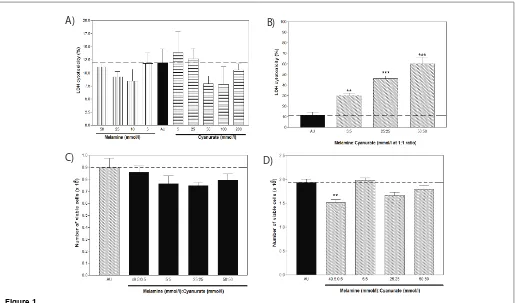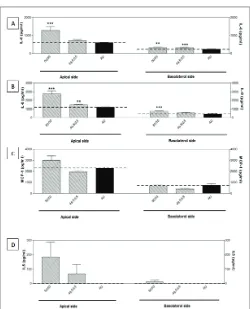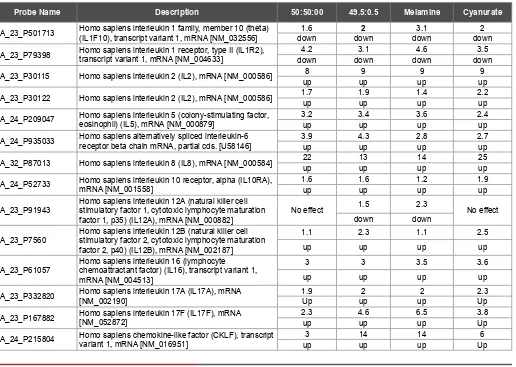Cytokine and Inflammatory-Related Gene Expression of Melamine Cyanurate on Human Renal Proximal Tubular Cells
Full text
Figure



Related documents
b) put in place a management structure for extra-budgetary resources and assessed contributions which places overall management and coordination of resource mobilization, including
Figure 1. A 65-year-old male patient with bilateral non-arteritic ischemic optic neuropathy: a, b) There is no cupping in either eye and optic disc pallor is evident in the left
In 1995, the Children’s Medi- cal Services (CMS) of the State of Georgia contracted with the Department of Pediatrics of the Medical College of Georgia (MCG) and the MCG
For more than a century, courts have universally applied the eggshell plaintiff rule, which holds tortfeasors liable for the full extent of the harm inflicted on vulnerable
This study showed the isolated marine bacterial strain that able to decolorize two azo dyes, identified as Lysobacter sp T312D9 on the basis of 16S rRNA
The aim of this analysis was to determine the cost- effectiveness and the budget impact of hylan G-F 20 therapy compared with conventional supportive therapy (NSAIDs and
The tumor suppressor p53 regulates downstream targets that determine cell fate. Canonical p53 functions include inducing apoptosis, growth arrest, and senescence. Non-canonical